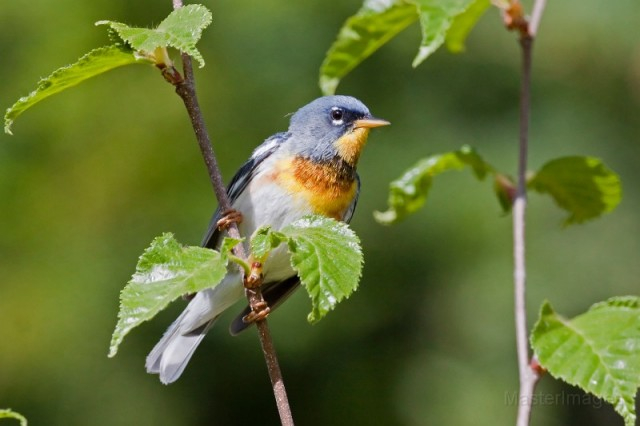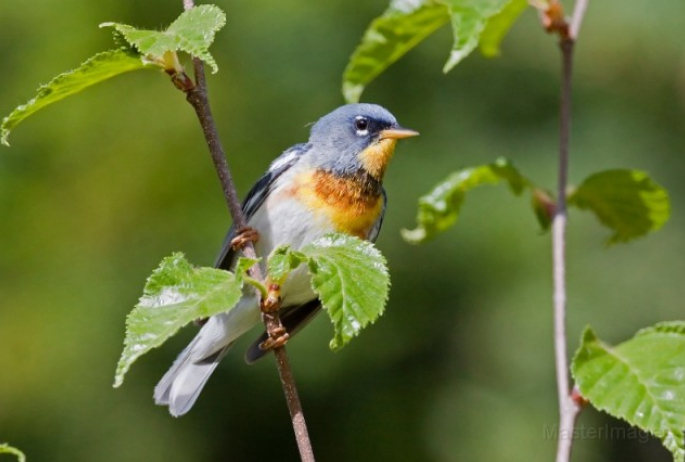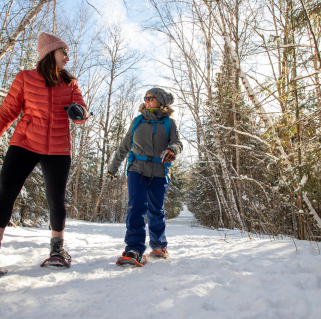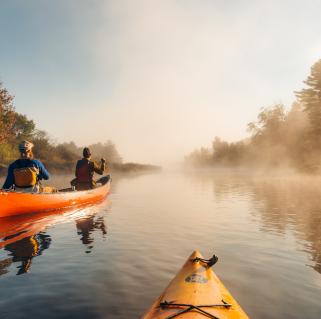Alan Belford
June 23, 2015
A High Diversity Time of Year
One of the best things about spring and early summer in the Adirondacks is the diversity of birds that can be found in our area during a simple walk. My walks are almost always taken with Wren who wants nothing more than to run, play, and swim all the time. More than that, her high energy level requires that I take her out regularly and I am compelled to go out even if I’m tired and might be tempted to sit and vegetate unproductively. It is a good arrangement because getting outside walking is a much better use of my time.
Lots of Warblers and an American Bittern
And so, in large part thanks to Wren, I’ve been finding birds each time I’m out. The other evening a walk after the rain along the southern access to the Bloomingdale Bog Trail yielded an American Bittern, a singing Veery, and both Mourning and Canada Warblers. In fact I’ve been seeing and hearing an excellent array of warblers every time I go to the bog including Chestnut-sided, Yellow-rumped, Blackburnian, Ovenbird, Common Yellowthroat, American Redstart, Black-throated Green, Black-throated Blue, Northern Parula, Nashville, Magnolia, Palm, and Black-and-White. Each day offers a random assortment from that list.
A few days after finding the bittern, another damp (it has been raining quite a bit recently) walk kicked up an American Woodcock which twittered and twisted its way back into the woods. The thrushes too have been singing each evening with Hermit Thrushes joined by a growing number of Veeries each night and a Wood Thrush (something I seldom find in the area) at the end of last week.

Lake Colby Walks
My walks along Lake Colby have also been productive. A similar list of warblers dominates those walks as well, but the other morning I heard a Cape May Warbler singing with them. Cape Mays are difficult to find in our area during the height of breeding season, so I’ll have to monitor if the bird sticks around and keeps singing. The habitat from which it sang didn’t seem optimal for a bird which generally breeds at northern latitudes. But perhaps Colby’s bog mat and associated conifers were enough to draw it in. After all, the bog mat does attract a few peatland species such as Palm Warbler and Lincoln’s Sparrow. This morning I didn’t hear the Cape May, but did find both Yellow Warbler and Eastern Bluebird attracted to the open, brushy areas along the bog edge.
Common Loons also use the bog mat – placing their nest along the edge of the lake - and the other day a pair of loons were swimming directly along the railroad tracks in beautiful sunlight. As fate would have it I was in a rush to get into the field for work elsewhere and I had left my camera at home! With more time for photos today I carried my camera with me in case I had a similar opportunity, but I saw no loons. The irony was not lost to me.
Instead of loons we saw the usual warblers, a Bald Eagle, Alder Flycatchers, and a Green Heron flying around the lake which eventually landed tucked into a wet, marshy area on the margin of the lake. Green Herons are uncommon in our area so I was happy with the find. We ended our time by watching a muskrat – after all, some of my most memorable sightings are of mammals.
A Black Bear to Trump Everything Else!
In fact, just yesterday Wren was acting unsure and a touch skittish while we walked along the Bloomingdale Bog Trail again. I walked along listening to songbirds and a drumming Ruffed Grouse, but she remained behind me, uncertain of going on ahead and allowing me to lead the way. This went on for some time and I began to wonder what she smelled that I hadn’t noticed. And then a black bear ambled out onto the trail perhaps 100 meters ahead! We stopped and watched it until it moved off. I walked up to about where the bear had crossed and found the remains of a white-tailed deer in the bog. The smell was rather strong and I’m sure the bear could detect it from a long way away. I then spotted the bear again – much further off than before – perhaps leaving the scene at our approach. It was walking north along the trail away from us, but soon disappeared from view. Rather than linger near the deer any longer, we turned to enjoy the soft fresh breeze as we listened to the evening songs of thrushes and other songbirds on our way out.
Now is a great time to plan a birding, hiking, or wildlife watching trip to the Tri-Lakes Region - you'll never know what you may run across on the trail! Check out our dining, lodging, and birding pages for more details.



Packages and Promotions
Valid Jan. 21
- Jan. 21
Valid Jan. 21
- Jan. 21
Pet Getaway
Voco Saranac Lake
Your dog deserves an Adirondack getaway too. Book our pet friendly hotel near Lake Placid welcomes every member of your crew. Book our Pet Package...
Valid Jan. 21
- Jan. 21
Valid Jan. 21
- Jan. 21
Stay and Dine
Voco Saranac Lake
Receive a 50 dollar credit per stay to use in our Boathouse Saranac Lake Pub. Enjoy an exceptional dining experience with unparalleled views great...
Valid Dec. 1
- Dec. 1
Valid Dec. 1
- Dec. 1
Linger Longer in Saranac Lake
Best Western Saranac Lake
Linger Longer in Saranac Lake at our supremely located property, Best Western Saranac Lake. Stay 2 nights or more and get 15% off!
Valid May. 1
- Oct. 31
Valid Dec. 6
- Nov. 1
Zip and Whip Expedition
Farmhouse UTVs
Experience Outdoors and Farmhouse UTVs have teamed up to bring your family and friends the Adirondack adventure you've been waiting for....
Valid Jun. 20
- Sep. 7
Valid Mar. 12
- Jun. 30
Guided Nature Immersions - 10% off for Pre-Season Registration
Adirondack Riverwalking & Forest Bathing
Picture it now...you are wading the Ausable River on a warm summer day, feel the cool water against you, hear the sounds of the birds and the...
Valid May. 1
- Nov. 2
Valid Apr. 1
- May. 1
Forest Bathing Guided Experience - 10% off for pre-season registration
Adirondack Riverwalking & Forest Bathing
Guided forest sensory immersion walk for all. Sign up early for 10% off!




















































































































































































































































































































































































